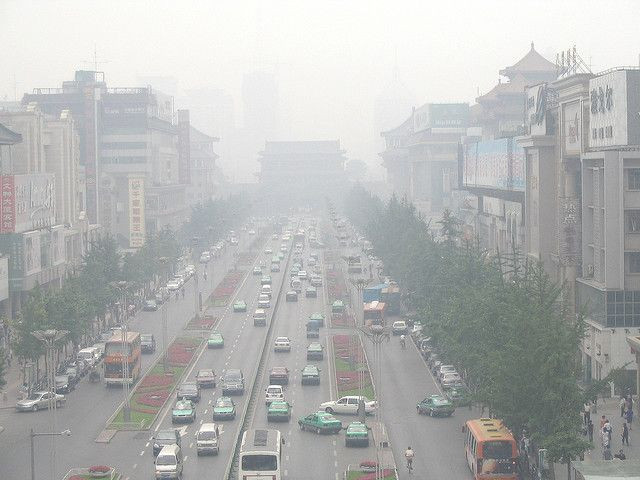China Smog Emergency Shuts Down City Of 11 Million People; Air Pollution Level 40 Times Higher Than WHO Safety Standard

In some countries, intemperate weather or military conflict disrupts ordinary life for people. But in industrialized China, adverse environmental conditions sometimes do the same. On Monday, dense smog nearly asphyxiated Harbin, the capital of northeast Heilongjiang province.
In the country’s first major pollution crisis of the winter season, schools closed or suspended classes with streets and highways clogged in the aftermath. The airport, too, closed as flights were suspended in a city of 11 million, roughly the size of Philadelphia and New York City combined.
An index measuring PM2.5, or particulate matter with a diameter of 2.5 micrometers, reached 1,000 in some parts of the city, well above the 300-level reading considered a serious health hazard. For daily exposure, the World Health Organization (WHO) recommends no more than 20 PM2.5 in the air. The Xinhua state news agency attributed the emergency to heating systems coming online for the first day as the winter season begins. Outside, visibility was reported by Reuters to be reduced to 10 meters.
Chinese people criticized the government online via popular microblogging sites such as Sina Weibo, decrying a rising wealth inequality in the world’s second-largest economy. Reuters reported that some Chinese news outlets have run stories describing inequality with regard to health-threatening environmental concerns. Whereas richer government officials enjoy expensive air purifiers in their homes and offices, working class people go without.
"After years of effort, the wise and hard-working people of Harbin have finally managed to skip both the middle-class society and the communist society stages, and have now entered a fairyland society!" one social media user wrote online, Reuters reported.
Environmental problems remain a sore political problem in China. In mid-2010, U.S. diplomats angered the Chinese government for posting PM2.5 readings taken atop the embassy in Beijing on Twitter, as reported last year by The New York Times. Since then, the Chinese government has failed to make much progress on environmental problems such as smog, despite promises.
Unable apparently to solve root problems, Beijing last week adopted a color-coded alert system similar to the former system used by the U.S. government to convey terrorism threat levels. The system was designed to help communicate air pollution emergencies necessitating temporary shutdowns in construction, factory production, and even outdoor barbeques and fireworks.
Monday’s crisis in Harbin surpasses a severe smog emergency last winter in Beijing, when PM2.5 reached levels higher than 900 one day in January, Reuters said.
Published by Medicaldaily.com



























